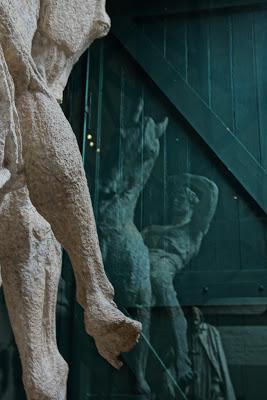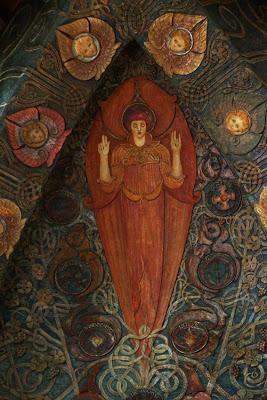
Watts was a Londoner, born in Marylebone in 1817 and living mainly in the city thereafter, although he did travel to Italy and have a home on the Isle of Wight. He spent most of his life unmarried - there was a brief and disastrous marriage to Ellen Terry, when he was in his forties and she was sixteen, which lasted less than a year. However, when he was 69 he married Mary, and this time the partnership would last for the rest of his life. Together, they conceived the gallery, which opened in 1904; he died later that year.

The Arts and Crafts building was designed by architect Christopher Hatton Turnor. Inside is a substantial selection of Watts' paintings, and in the course of his long career - ending only with his death aged 87 - he covered a huge variety of styles and subjects. There are portraits of many famous contemporaries, allegories such as the famous Hope, landscapes, and more. The sculpture gallery is dominated by two huge works - original plaster models of Lord Tennyson with his dog, and of Physical Energy, a horse and rider who can be seen in Kensington Gardens (casts also went to Cape Town and Harare).


Another room gives a more personal view of Watts, with a timeline of his life and items including letters and the small cap he wore in his old age. The gallery also hosts exhibitions, which place Watts into his wider artistic context. Until 3 November 2013, the exhibition showcases Frank Holl, who is undeservedly little-known today thanks to changing fashions and his early death.

There is little direct reference to the Watts Memorial at the gallery, but outside is a rather nice echo. Plaques marking donations to the recent restoration of the gallery are in the style of their Postman's Park counterparts. One is, very aptly, dedicated to postmen!

However, the Watts household did not confine their interest in Compton to their own home and gallery. Mary in particular was interested in building an artistic community here: in London, she had already run clay-modelling classes in Whitechapel for boot-black boys. In 1895, she began terracotta classes for Compton's villagers to make decorations for a new mortuary chapel in the village cemetery; more than seventy became involved.

The chapel is an extraordinary building, its interior and exterior decoration very much Mary's creation. She brought together a range of influences, from the Egyptian to the Celtic to Art Nouveau. The exterior terracotta uses local clay, found in the grounds of her home Limnerslease, and was finished in 1898. The most talented of those who had worked on the exterior were invited to continue working on the gesso interior which was only completed in 1904 - just in time for George's ashes to be laid inside in a gesso casket.



The pottery had become a company, Compton Pottery. Although Mary died in 1938, it would continue producing her designs until 1956.

Outside, the cemetery's graves are of varied and often beautiful designs. Among the most famous occupants are the Huxley family; there is a mystery about the inscription on Aldous Huxley's grave.

I visited the gallery and chapel with London Historians, which organises an excellent programme of events and social evenings. It also offers a monthly newsletter and various member discounts and competitions.

